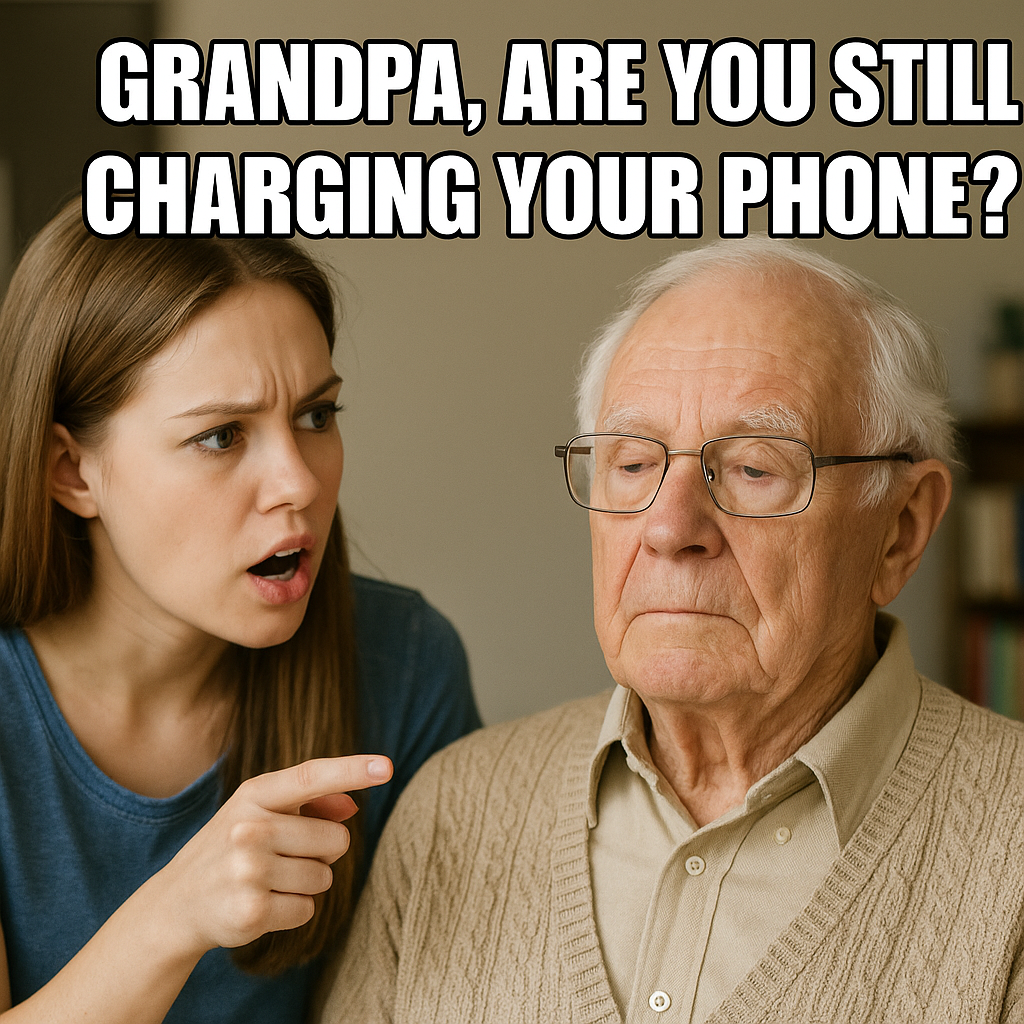TLDW; No
Basically the video is testing phones with varying charging speeds and how much battery degrades after 500 charging cycles. Also, the affects on performance after battery degradation at 5:37
Timestamps of some tests:
- Test results for different charging speeds at 3:06
- Storing batteries at 1%, 50%, 100% at 3:43
- Battery performance at 4:42
After 6 mins he talks about why the tests took 2yrs and how they did it 3 times.
Summary:
-
When your phone’s battery health drops to about 85%, battery life shortens noticeably.
-
When your phone’s battery health falls to around 80%, a battery replacement is recommended.
-
When your phone’s battery health is above 80%, performance is basically unaffected.
Not related to the video. But, this guy only has 37 videos yet somehow has 1.5Million subscribers. He also knows geekerwan. Wonder if there’s anything sus…
Apparently this is a well-established channel in China, and they’ve just recently started translating their backlog of videos to English for YouTube.
The channel has great, well made content. I think it launched from Shorts and TikTok where there was also a large Chinese population following.
If you hit it right with shorts that’s not that weird, shorts are huge for driving up subscriber numbers.
Considering the views of some of that channels shorts, it’s probably it.
Was there nothing about how fast charging impacted how quickly it reached 80% SoH?
He only checked battery health loss. Not the speed of capacity loss until 80%.
The end result, it does not matter. Use and charge your phone how you would like to. A few percentage for keeping the battery at 20-80% only to have a reduced capacity from the very start does not make sense.
Well. I mean that’s like THE most important thing. Charging at a higher C rate is going to cause increased wear on the battery and less life. That’s why most phones are limited in that way.
He did test Iqoo phones charging at 120W. And the wear was less than slow charging. So, that should answer your question. But, he did ask to comment any other tests people wanted.
You can drop one on this video if you want to.
I don’t have a Google account, sorry
That can’t be right. Either the result is not statistically significant, the methodology is bad, or the brand has a reserve capacity algorithm which doesn’t activate properly when slow charging.
Could it be because the phone spends less time in the charging state?
It makes sense to me IF it actually works.
Having extra capacity when a device is brand-new isn’t a huge boon, but having stable capacity over the long term would be. At least for me.
Of course this will depend on your habits. If you replace your phone every year, then it doesn’t matter. If you’re a light user and only go through a couple charge cycles per week, it’ll matter less than if you go through 1-2 cycles per day.
Personally I’m at around 1 cycle per day on my current phone, and after nearly 3 years (over 1000 charge cycles now) the battery life is shit — much worse than just 80% of its original battery life. Performance also suffers. With my last phone, I replaced the battery after 3 years and I was amazed at how much faster it was. I didn’t realize throttling was such a big problem.
I might replace my current battery, but it’s such a pain, and it costs more than my phone is realistically worth.
This is literally what a bunch of companies already do. In a Samsung flagship, if you measure the “full” unloaded battery voltage on day 1 vs day 1000 it will be about 0.2v higher after three years. This is a reserve capacity which they slowly give back over time to keep the perception of “day 1 capacity” through the first 5-10% of batter degradation.
Pixels do the opposite. They slowly reduce capacity and charging speeds as you go past 200 charge cycles.
SoH?
State of Health?
Yes, it’s a key metric for BMS.
Bowel movements?
State of Health for Battery Management Systems
When your phone’s battery health falls to around 80%, a battery replacement is recommended.
Yeah, just get right on that, it’s basically a trivial process.
Thank you for the summary!

Welp fuck me I guess
75% is not bad. You can still use the phone with some performance loss. How old is the phone? If its been 2-4yrs. A battery replacement is not a bad option.
Daaaamn I upgraded my iPhone XS Max last year, I had it for over five years and my battery health was like 87%. I used it all day every day, but never used any type of fast charging. It lasted about nine hours of use when I upgraded. I think I got lucky.
It’s around 3-4 years now I think. Sad thing is that it’s an iPhone mini, so the capacity wasn’t that great to begin with so I go around a full day on a charge if I just have it laying next to me.
Also since it’s an apple I guess that it’s really hard to replace the battery. But I might look into it. It’s better than buying a completely new one anyway.
That just sounds like a problem of expectations
-
The amount of time the battery spends at higher voltage definitely affects its capacity over time. There’s plenty of research on Li-ion battery service life characteristics done with greater scientific rigor than is possible with batteries installed in phones.
It can take longer than the few months these tests required to see the effect. A phone that’s usually stored at 60% will eventually show a big capacity advantage over one that’s stored at 100%. That’s probably mostly true at 80% as well.
For some anecdata, my Pixel 4a has spent most of the past five years limited to 60%. It reports 1152 cycles and 91% capacity.
But is there an advantage on artificially limiting your battery to 60% rather than charging to 100% and having 40% degradation at the end of the lifetime? In the second scenario I start at 100% capacity that slowly gets lower and lower whereas in the first scenario I have only 60% from the start and still some (although much less) degradation.
The advantage is that I can occasionally charge it to 80% or 100% if the situation demands it.
And if it can run a 6 hours with 60% then I would like to preserve its ability to hold on for an entire day at 90% if the situation demands it. I often deal with this at school. A half day of back-to-back classes? 40% is game. But a schedule that has more than a 6 hour gap that I’d likely fill with studying from PDFs and gaming? Then a good 90% is needed.
School seems like a good use case for a powerbank since most people carry backpacks to school.
Yes, but given how the battery charge controllers already manage it, I don’t think you’ll see a meaningful difference. You’ll probably replace it for other reasons before then.
Dude runs a 4a. Probably not.
What do people think of the chargie ?
The elephant in the room here is charging a battery when it is hot kills it fast. I live in a hot country and my (GrapheneOS) Pixel7 was spicy pillow in 18 months, happily charging away at 50+C at times (I leave it in a wireless charging stand 90+% of the time). Replaced the battery with a iFixit kit and got a chargie, which lets you set a cutoff charge temperature which I set to 33C (and 80% charge). Often in summer it charges only at night. Another year odd later gOS reports 100% health FWIW. Any phones out there that allow limiting charge by temperature natively? These devices all get developed in cool climates and aircon it seems…
You can use software to do what you use hardware and software.
I imagine a tasker or macrodroid profile to limit battery charging based on heat.
Tasker and gOS don’t play very well together, you’ll need to run (sandboxed) GPlay etc (Tasker is pretty overzealous with DRM, PowerAmp, MoonReader for example let you just authorize it once and then you can rip out GPlay and it’s fine, I don’t mind paying for good software, I just don’t want google) which I don’t on my main profile, but I suspect you’re right. These days I don’t program on my phone (save for a bit of python in Termux), I’d rather VPN to my home network and code on a real computer. If it gets me even two years extra battery life it’ll pay for itself.
Does Tasker literally have charge control these days (I’ll assume it has the sensor)? If so it’d make a good, more versatile solution for tinkerers (but probably at least 30% the cost or more give the module buying monetization craziness compared to a set and forget chargie).
You can buy a standalone copy of Tasker for $4 if you get the patreon membership.
That does not require google play.
Does Tasker literally have charge control these days (I’ll assume it has the sensor)? If so it’d make a good, more versatile solution for tinkerers (but probably at least 30% the cost or more give the module buying monetization craziness compared to a set and forget chargie).
I haven’t checked. But, it should be possible. Combined with battery limit feature of most phones. You can post that question in [email protected] or the tasker subredit if you still use reddit.
I’m pretty sure that only works when rooted. maybe there are exceptions for a few phones
For those coming here from search, I actually did try the patreon path, for two months, and if you’re good with an ongoing subscription of $US48 per year (if you want updates), have at it. My experience was one password and silence thereafter. YMMV. Said password did not give updates, did not make me want to make tasker a part of my gOS experience (I hate that bastardized C language with gotos hard) who knows, spin the dice, the guy who took over from the original might be OK…
Interesting. It’s not written anywhere that you need patreon to get updates. I assumed there would be an in-app updater and a lifetime license meant just that a lifetime license.
You could post on the tasker subreddit or send another email.
BTW, I found this information from the site faq
Will I be notified of updates? You will not. You will get a special download link when you purchase the licenses. The same link will always contain the latest update
Maybe, hit that link again to download the latest version?
On another note, you mentioned finding my comment from search. Did you find my comment from searching tasker on lemmy? I didn’t expect anyone to find it from search.
Maybe, hit that link again to download the latest version?
Maybe, did I mention I dislike the coding ‘language’ ? I gave up on it and am no worse for it, no hate on those who like it, it is after all the most functional android automation out there (but likely doesn’t have charge stopping ability or someone would have said, so the point is moot) The base tasker worked, and my discussion on the voice activation plugin fell on deaf ears, I moved on.
On another note, you mentioned finding my comment from search. Did you find my comment from searching tasker on lemmy? I didn’t expect anyone to find it from search.
No, I was talking to those who might find it in the future, why you would think it’s about you I dunno.
Maybe, did I mention I dislike the coding ‘language’ ? I gave up on it and am no worse for it,
You don’t need to learn C coding to use tasker. The latest version also has a simple UI named tasky for simply loading plugins from the website. I replied because you said the patreon version does not get updates but that does not appear to be true.
No, I was talking to those who might find it in the future, why you would think it’s about you I dunno
Its not about me. I asked because the chances of someone finding this discussion on Lemmy especially for tasker is super low. People here prefer Foss apps for reasons. Anyway, lets move on I did not get the point of your comment at all.
You can try Automate instead of Tasker, for automation in general. IMO Tasker’s interface and workflow leave much to be desired. However, Automate is also paid via Google Play, so the same issue might be present. You can ask in their subreddit.
But, I’ve never seen anything in Automate allowing to stop charging.
Not that its a bad study or anything, but where are the data points? Did they happen to publish their numbers somewhere?
Quite a few components have extensive detail on their specs. IC chips/resisters/etc…etc…
Also android artificially reduces capacity as it gets older. Most of the pixel phones for example will use number of cycles + time to determine the “max” capacity. So it can be artificially worse depending on the model. No idea what iphone does.
Its not the best test imo. He only did 500 charge cycles which is more like 1.5 years worth of charge cycles. But even having data for 2 years isnt very useful. If you replace your phone after 2 years then there is no need to care about battery life at all. This whole thing of preserving battery life is something for people that want to use a phone for 5+ years without needing a new battery.
In the first place, people have already done professional studies to analyze all kinds of lithium battery capacity degradation over many cycles and thats where the 30-80% number comes from. The whole introduction to his video is “there is a saying”, so all he had to do was actually look at the research where that “saying” came from. Then he could have still run his little experiment in an attempt to replicate parts of the study. Instead he basically told the viewers “if you throw away your phone after 2 years, then you dont need to care about charging limits” which is very useless information.
After 1500 cycles the difference between the 5-100% and 30-80% system would be so drastic that you wouldnt be able to really use the first one, while the other one would still work decently well.
This whole thing of preserving battery life is something for people that want to use a phone for 5+ years without needing a new battery.
That’s a narrow point of view. It’s also reducing the ecological impact if a device’s battery isn’t trashed after two years, someone else would likely use it.
I think they more mean that the testing is flawed in that they didn’t test nearly enough cycles.
The type of person to get a new phone every 2 years probably doesn’t care much about the ewaste either, sadly.
But even having data for 2 years isnt very useful. If you replace your phone after 2 years then there is no need to care about battery life at all.
When I was younger my mother would scold me for needing a replacement phone every 2 or 3 years because of how much they cost. Aside from gaming I was also working on schoolwork or reading stuff on my phone because I had no computer, and I often charged my phone to 100% while doing those things causing it to overheat and charged it by 20% so that wasn’t doing wonders for its lifespan. Man if only I knew. So it grinds my gears when I see someone dismiss battery lifespan concerns by assuming you’ll want to buy a new phone in 2 years. My mother’s phone has been with her for upwards of 5 years and she’s perfectly content with it. And because I invest my time in only one game (the same one for years) there is no need for performance upgrades. So what’s the point of buying a new phone every two years?
It’s a bad study
Not that its a bad study or anything, but where are the data points? Did they happen to publish their numbers somewhere?
Atleast cannot see anything in this video. Maybe, on weibo?
Also android artificially reduces capacity as it gets older. Most of the pixel phones for example will use number of cycles + time to determine the “max” capacity.
About android. Is there any report about android in general or just pixel?
Also, Good point about pixel. The forced capacity reduction cannot be stopped by the user.
Iphones reduced Soc performance in the past. Now, they do when detecting low voltage on your ageing battery and provide a bypass.
About android. Is there any report about android in general or just pixel?
Im only aware of pixel ATM. Thats a good point. Im not sure if google only made this change on pixel or with other phones somewhere in the blobs they distribute. According to the video above, it sure seemed like it as not reducing capacity if the reading was correct.
Not familiar with weibo. Ill take a look, thanks.
Charging the battery kills the battery yes
The message is correct as modern phones are able to take care of their batteries.
The experiments themselves were very flawed.

I want someone to make a slow charger with PPS to compare them. My phone on a “slow charger” gets about as hot as when I use a fast charger with PPS. But a fast charger without PPS and it gets extremely hot and slows down charging a lot. Especially when I leave it on my bed. That definitely is not good for it’s health. They charged their phones in little stands which gets them plenty of airflow to keep them cool.
It looks like the iPhone 12 doesn’t support PPS. Fast charging could be even better if they used a device that supports it.
The charging tech does make a difference on charge speeds and heat. But, PPS should not make much of a difference. especially against advanced chinese charging tech solutions.
My phone gets hot when I use a slow charging. But, Phones using SuperVooc charging tech do not have heating issues when charged with them. Because they have most of the charging logic in the charger and not the phone.
So, your phone can be pumped with 60-120w and you won’t notice much heat at all.
The 120w xiaomi 13 charging is insane, so I usually “only” uses the 67watt except for “emergency charging”, because it heats a little.















